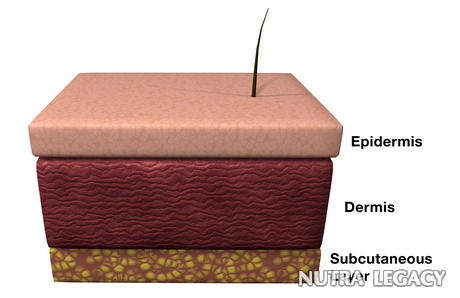All You Need to Know about Skin Epidermis

- The skin epidermis, or upper layer of the skin, is where most skin care issues take place
- Since our skin is the organ that protects us the most, certainly our first line of defense against the outside world, it’s very important that we take care of it, such as with natural skin care options
You probably remember being asked in a science class, “What is the largest organ in the body?” Most of the students think hard; some venture to answer with answers like the lungs, the brain, even the intestines. Few students ever get the answer right the first time. But, of course, the answer is the skin. Understanding this major organ, including the epidermis layer, is important if we want healthy skin and to avoid skin problems, including cancer.
The Skin 101
As mentioned above, the skin is the largest organ in the body. If you could remove your skin and weigh it separately, it would tip the scales at about six pounds. That may not sound like much but compared to most organs it’s impressive.
The skin is also very important for a number of physiological reasons. For one, it protects everything inside us from everything outside us, including bacteria and heat. Also, our skin helps us keep our body temperature normal thanks to the production and evaporation of sweat. Our skin is also the source of both pleasurable and painful sensations thanks to billions of nerve cells which translate what our skin feels into mental thoughts almost immediately.
Like most organs, the skin has its own separate parts. In this case, three: the epidermis, dermis, and fat layer (also called the subcutis). The subcutis is basically the layer in our skin that offers the most protection from the elements and from serious injury. The dermis layer is responsible for most of the functions above, including housing the nerve endings. And that leaves us with the all-important epidermis.
The Epidermis Revealed
When you look at your skin, you are seeing the epidermis. It’s a thin layer really but it actually is responsible for keeping us water-proof and for giving our skin color. That’s because the epidermis is home to melanin, the pigment which determines our skin shade.
Within the epidermis are three sub-layers which contribute to the success of the epidermis. The stratum corneum is the uppermost layer and is where dead skin cells (known as keratinocytes) are shed. Those dead cells also form keratin, an important protein that allows the epidermis to protect the body from substances trying to get inside. Undernearth is a layer of living keratinocytes (also called squamous cells) which help protect the body from other types of environmental stress. Finally, the basal layer is home to the cells which are constantly dividing in order to produce new squamous cells to keep the skin fresh and uninjured.
Everything that happens in these sub-layers (and in the rest of the body, as well) is determined by your DNA. Unfortunately, when that DNA is damaged because of exposure to UV light it can cause the process to stop functioning normally and that leads to skin cancer. All of the different cells present in the epidermis can be affected by cancer hence the different types: basal affects the cells in the lowest sub-layer, squamous affects the living keratinocytes, and melanoma hits the cells known as melanocytes which normally produce melanin.
The information supplied in this article is not to be considered as medical advice and is for educational purposes only.
|
| ||||||||||||||





 21 Nov 2008
21 Nov 2008